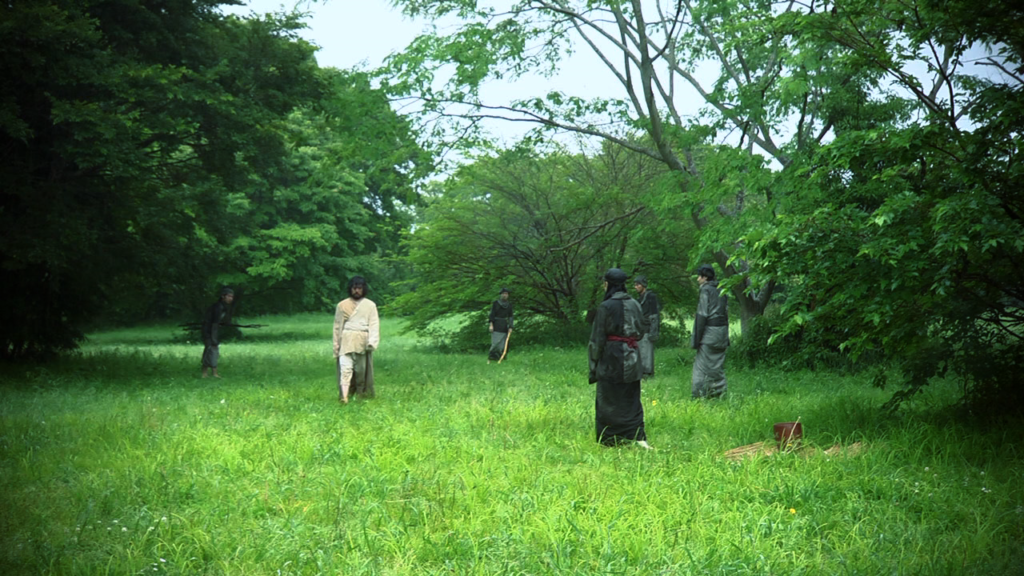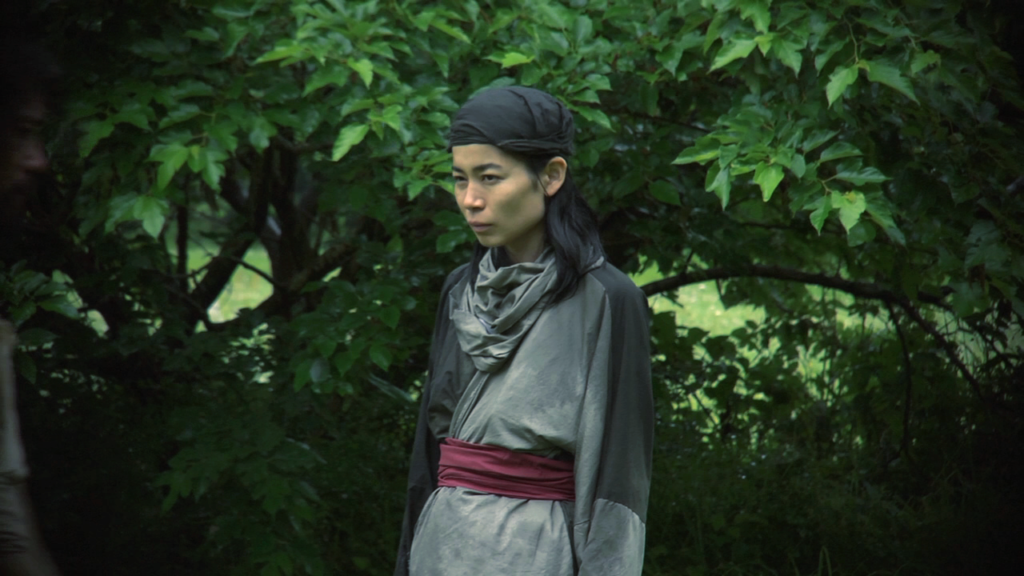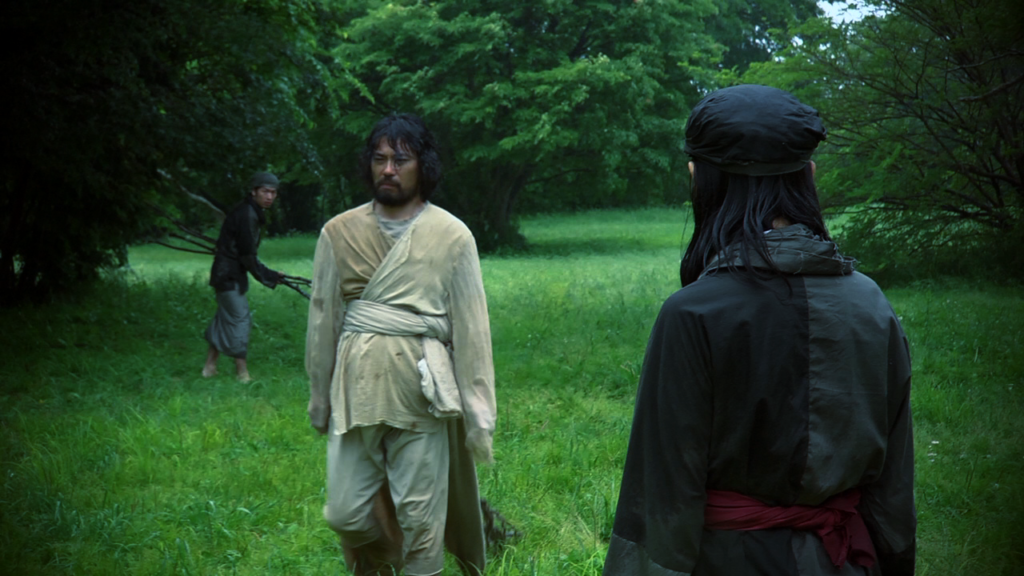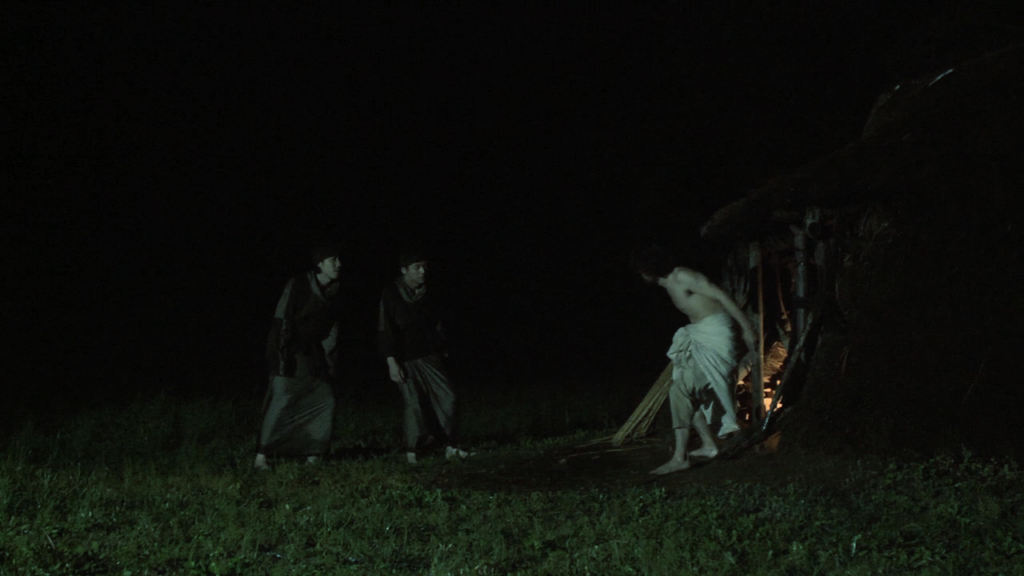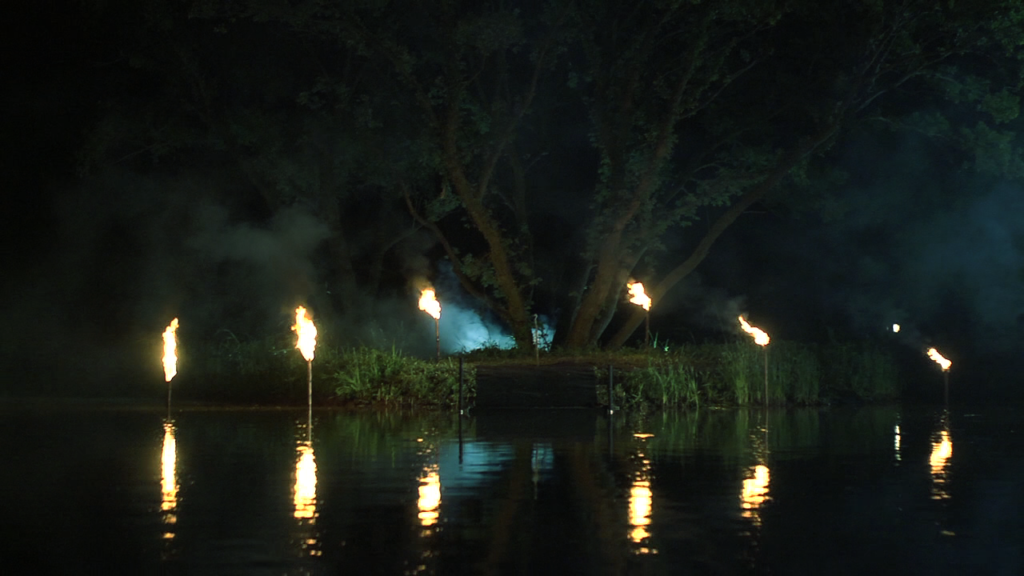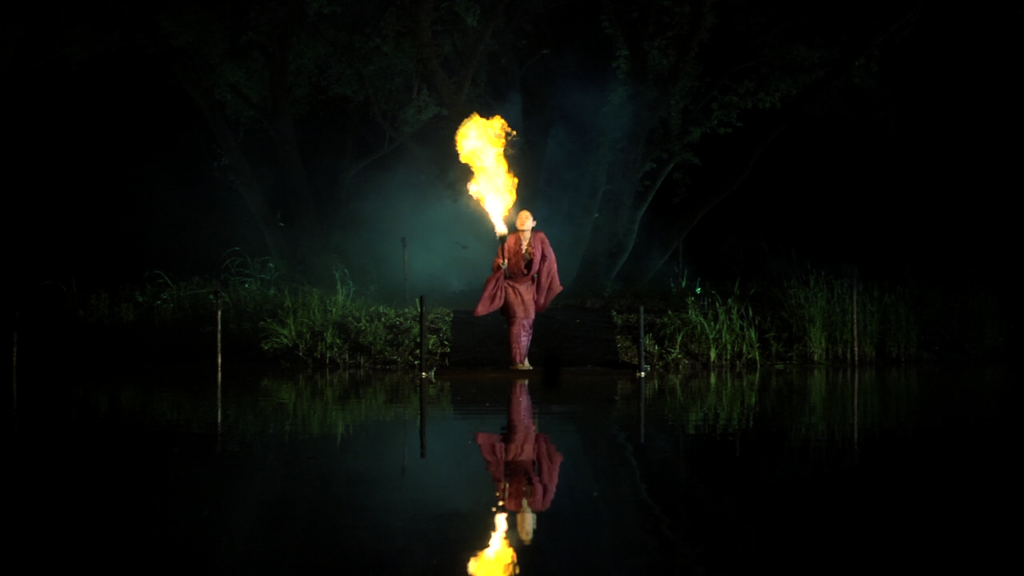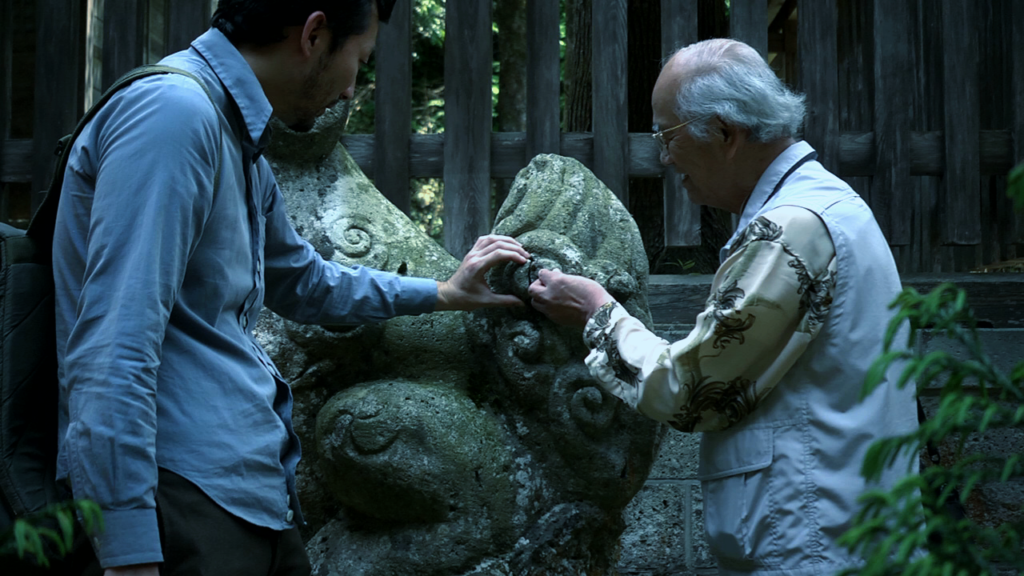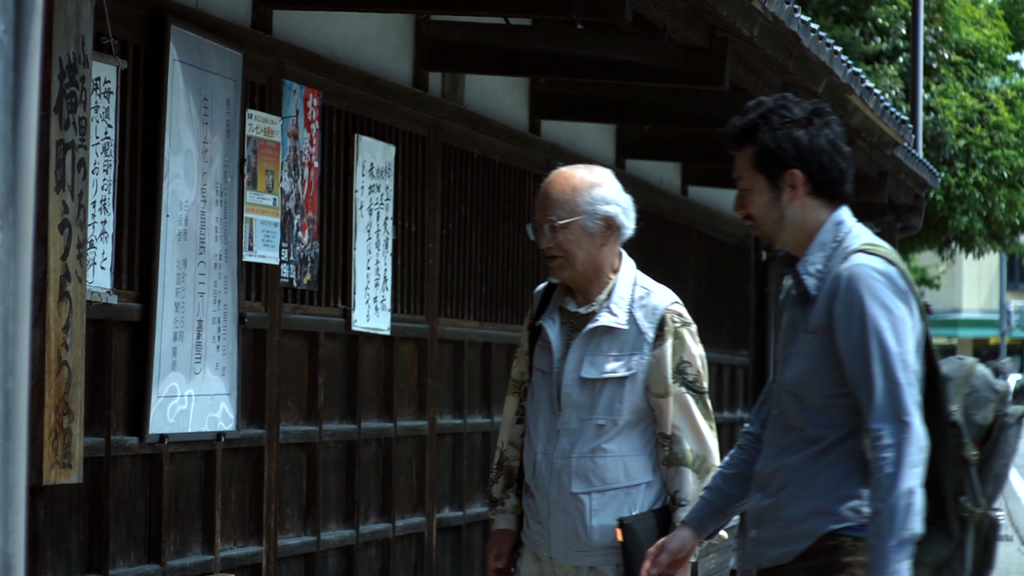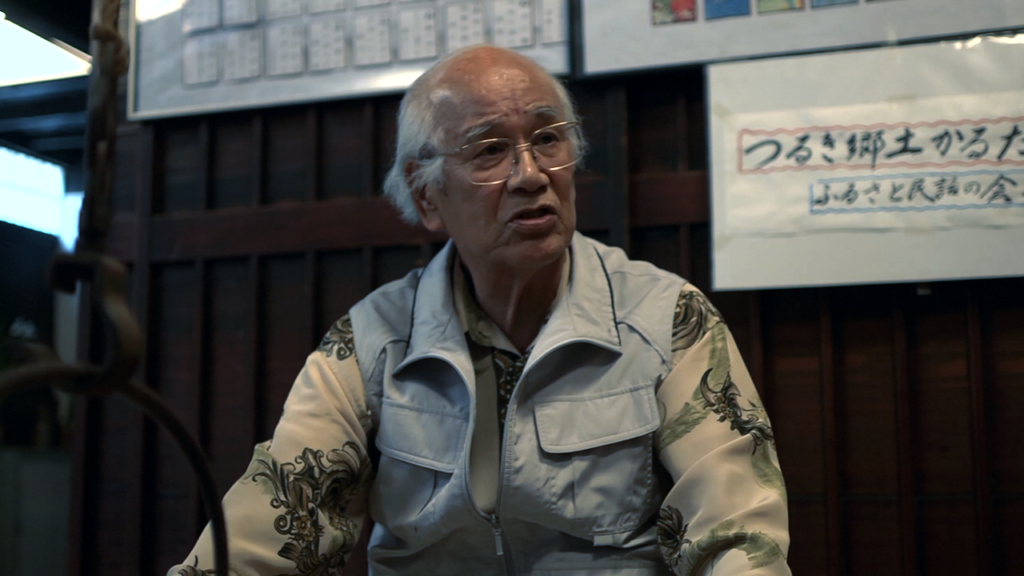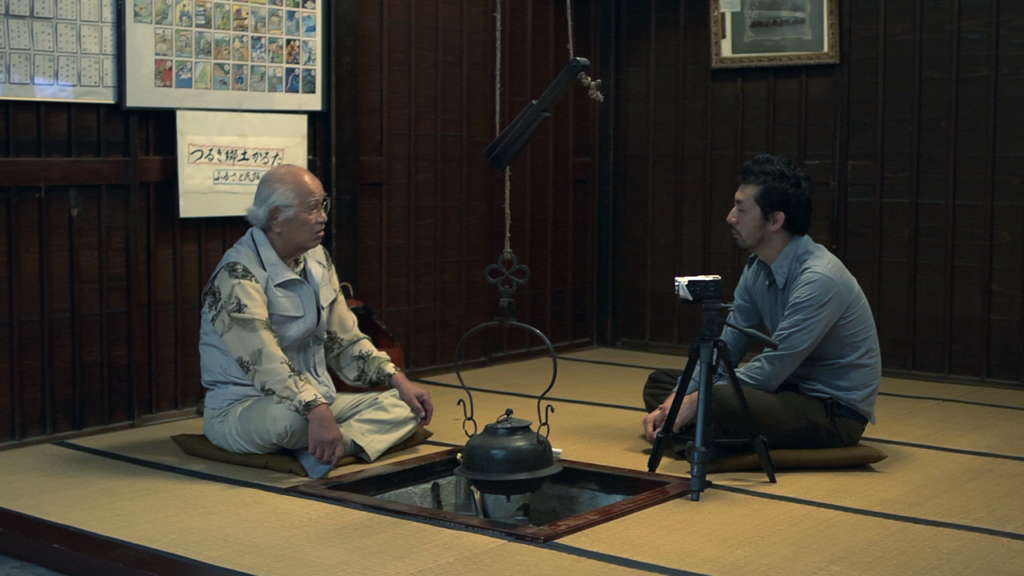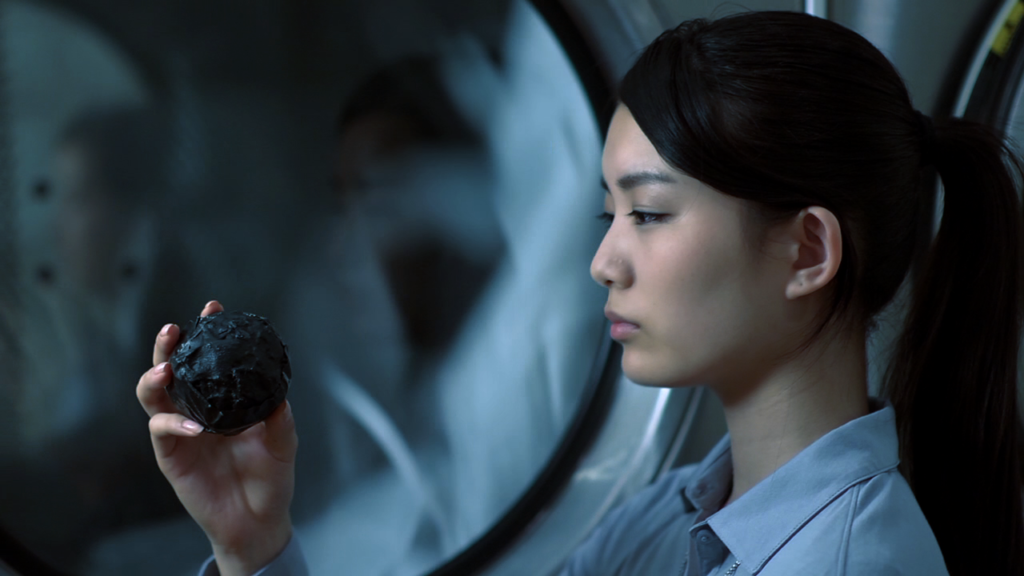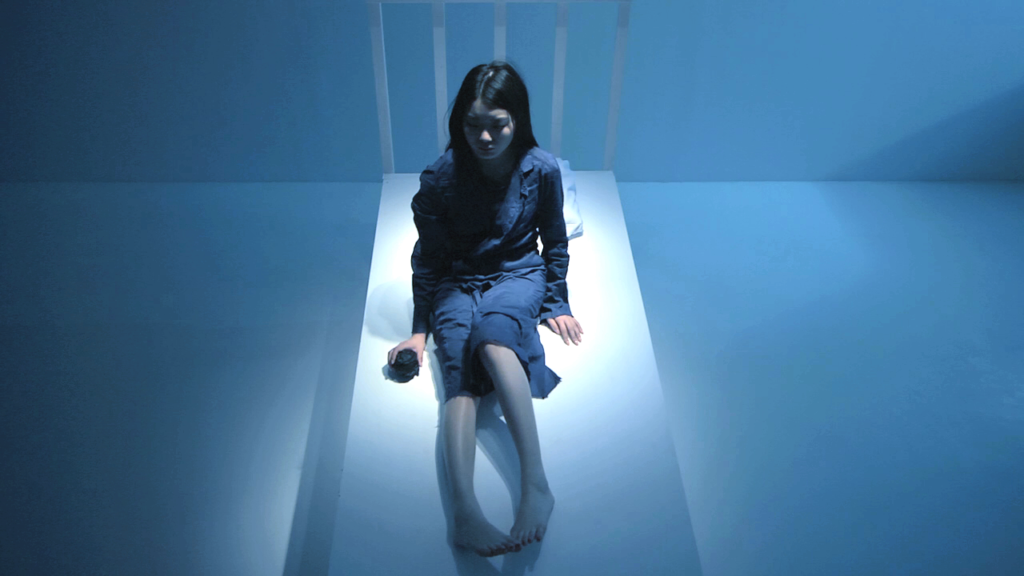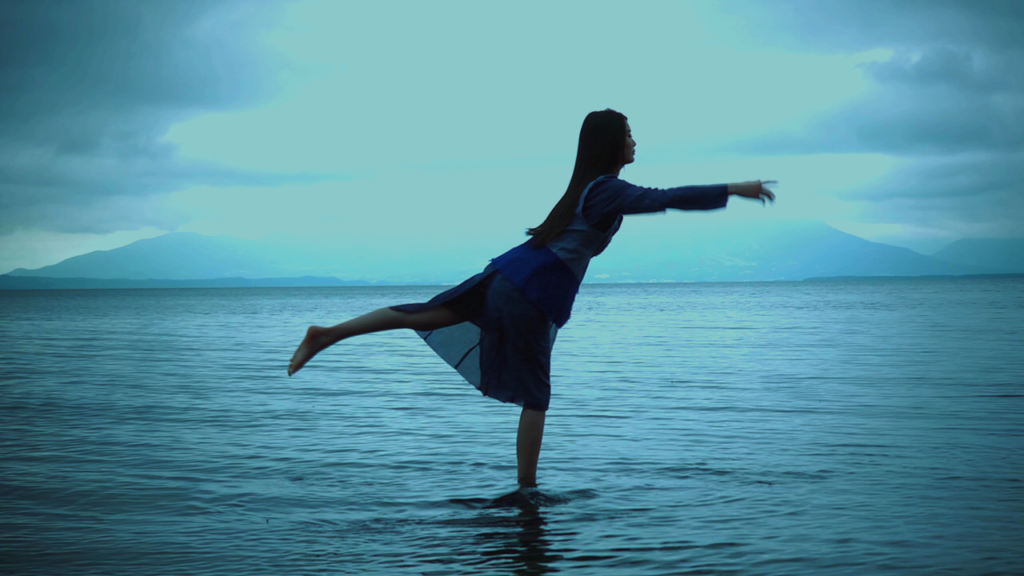visible breath

visible breath
Format: 5 Channel Video Installation, HD
Duration: 14min30sec
Aspect Ratio: 16:9 Sound: stereo
2008年より、伝承をテーマにしたプロジェクトに取り組んできた坂野は、やがて自身が生まれ育った石川県白山市鶴来(旧鶴来町)へとたどり着く。地元の蔵を改修したスタジオを構え、鶴来内外の協力者を募りプロジェクトチームを形成し、完成させたのが本作「可視化する呼吸 ~ VISIBLE BREATH」である。
生活に溶け込んだ地元の祭りや風習、文化。当然のように受け入れ、自身の体に染み込んだそれらは、一体どこからきたものなのだろうか。こうした疑問から時代を遡り、同地での文化形成の記憶を紐解いていくなかで、地元の民俗学研究者・村西博二※との出会いが制作活動に大きな影響を与えた。地元の民俗学“研究者”である村西が語る物語は、鶴来という地域を超えて日本の神話、渡来人のルーツなど数千年の歴史に及ぶスケールを持つ魅力的な“フィクション”だった。
本作では、村西の語りや伝承、坂野自身のフィールドワークをもとに、古代から現代まで5つの異なる時間軸でそれぞれの物語が展開される。渡来してきた者たち、製鉄文化の伝播、神秘的な自然の変化など、5 つのスクリーンに映し出される物語は「現代/未来」に照応され、ときに呼応しながら進んでいく。豊かな自然に育まれ、また白山信仰のもと海と山を繋ぐ交易の街として栄えてきた鶴来。習わしや文化は受け継がれ、変容し、時を超えていく。その“息づかい”を感じ、営みの軌跡をたどることで、土地、人、時が交わり、重なり合う。それらが織りなす多層的な世界から聞こえてくる息づかいに、私たちは何を想像し、どのような物語を語り継いでいくのだろうか。
※ 村西博二(むらにし・はくじ)
石川県白山市鶴来在住の民俗学研究者。大陸文化の色濃い古代能登、一時代を画した白山信仰、郷土の古代を中心に研究を行う。また、地域の歴史・文化・自然・伝統・民俗・産業などを紹介し、精神的・経済的活性化を図る活動を行っている。
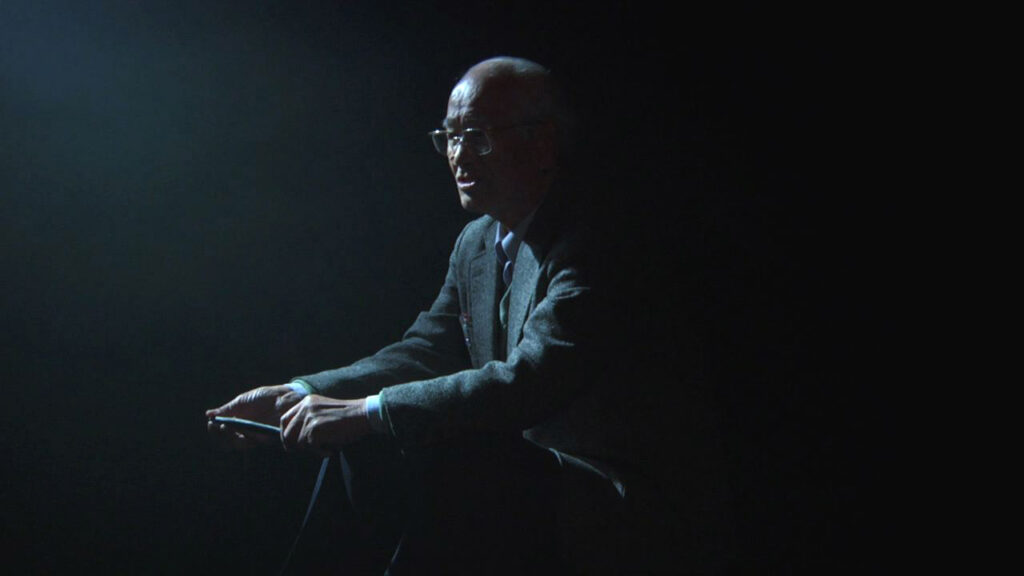
<身体に染み込んだ感覚はどこからやって来たのか>
自分は何者で、どこからやって来たのか? 誰しもが一度は抱く純粋な疑問。しかし、多くの人はそれ以上深追いをすることなく“ 今 ”を重ねていく 。 坂野充学は県白山市鶴来に生まれ育った。鶴来では、毎年 10 月に白山市の無形民族文化財にもなっている「ほうらい祭り」 が開催されており、坂野も幼少の頃から当然のように祭りに参加していた。2008 年、秋田県大館市で作品制作した際に、坂 野は 400 年以上の歴史を持ちながらも途絶の危機にあっ た獅子踊りと出会う。そこで「獅子踊りを途絶させ てはいけない」「途絶するのは仕方ない」「変化しないこ とが伝統なのではなく、変化しながら続いていくのが伝 統なのだ」という様々な地元の声を聞き、自身の町の文化・ 慣習・身体に染み込んだものの根源や、その継承に興味 を持つようになる。それは同時に、あまりにもそれらのことに対して無知であったことを痛感することとなった。

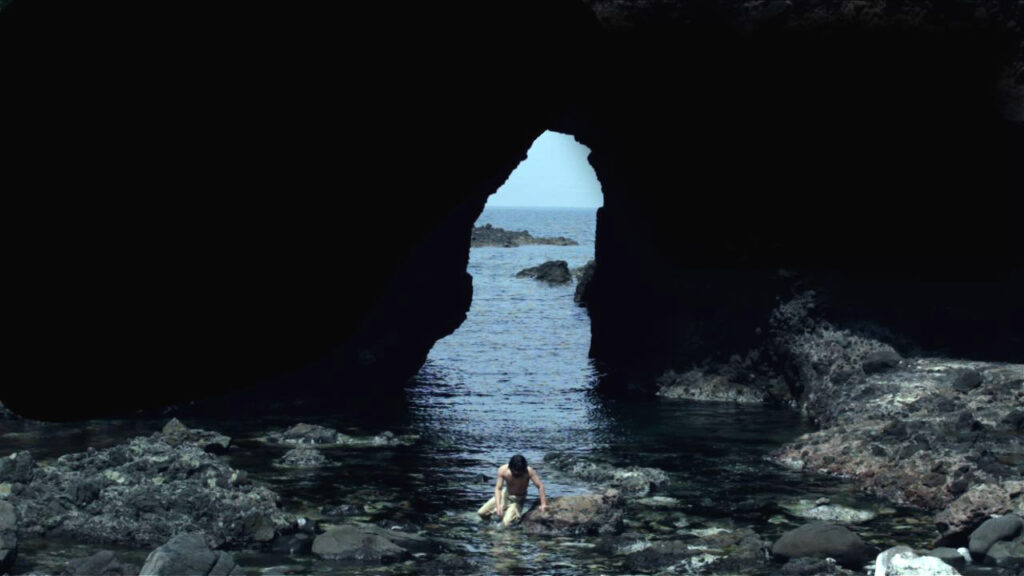
<かすかに残る痕跡を探し、物語を紡ぐ民俗学“ 研究者 ”との出会い>
地元・鶴来でのリサーチを開始した坂野は、「ほうらい 祭り」の起源を尋ねるために神社を訪れた際、ひとりの 民俗学“ 研究者 ”と出会う。それが『可視化する呼吸』 にも登場する村西博二氏である。村西氏の口から鶴来が かつて鍛冶屋町であったこと、鍛冶屋文化の起源が古代 にまでさかのぼることを聞かされ、さらには、祭りで坂 野自身も歌っていた唄の背景に想像もしなかった事実が 隠されていたことを知る。
『可視化する呼吸』には、 ある鍛冶屋唄の一節が登場する。その詞はこうだ。
そこのねぇちゃん ( そこの女よ ) 鍛冶屋ごとしょうまいけ ( いいことしよう )
せどにコモひいて ( 瀬戸に蓙ひいて ) べべしょまいか ( 交わろうじゃないか )
「ほうらい祭り」でも歌われるこの唄は鶴来の人なら誰し もが知っており、その詞の内容から子供も面白がって歌う。しかし、村西氏曰く、一見卑猥に思える詞には「炉の火を強めろ」や「鉄を入れろ」など鑪(製鉄法)の技 術を継承するための言葉が隠されていたのだ。鶴来には こうした鍛冶屋唄が 100 以上伝わっているが、そこに隠 された言葉を知る者はほとんどいない。また、鶴来だけ でなく、かつて鍛冶屋文化が栄えた町には必ずこうした 唄が残されているという。驚く坂野に、村西氏は「大事なことは隠されていく。“ よくわからない”と言われてい るものにも、実は意味がある。ただ、“ わからない”から 面白い。“わからないもの”は後世の人間が解釈して伝えて いけばいい」と語った。
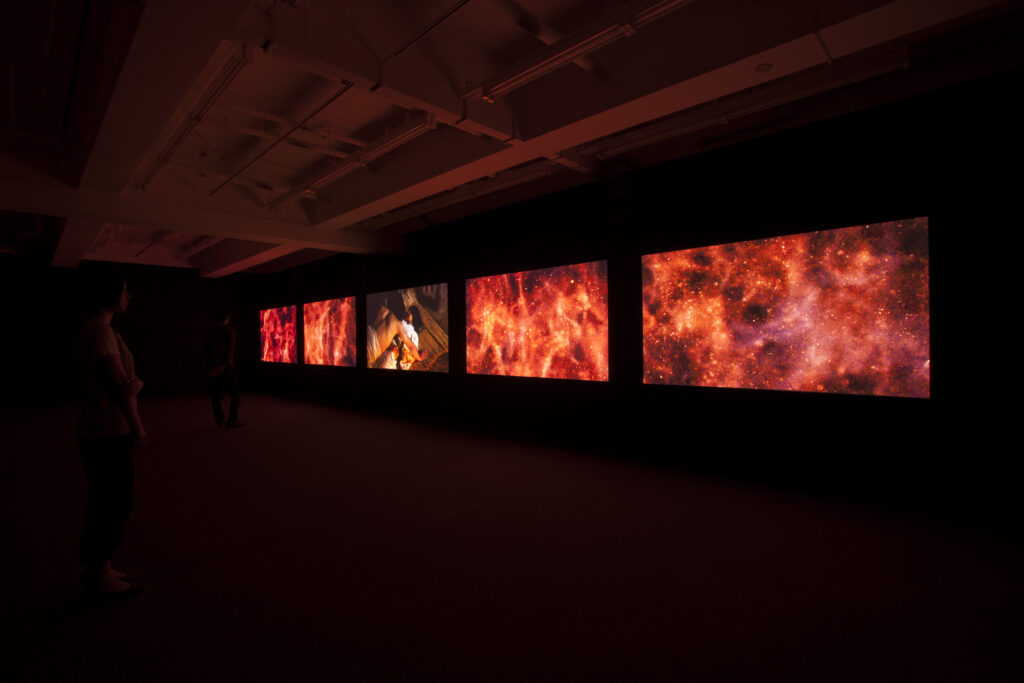
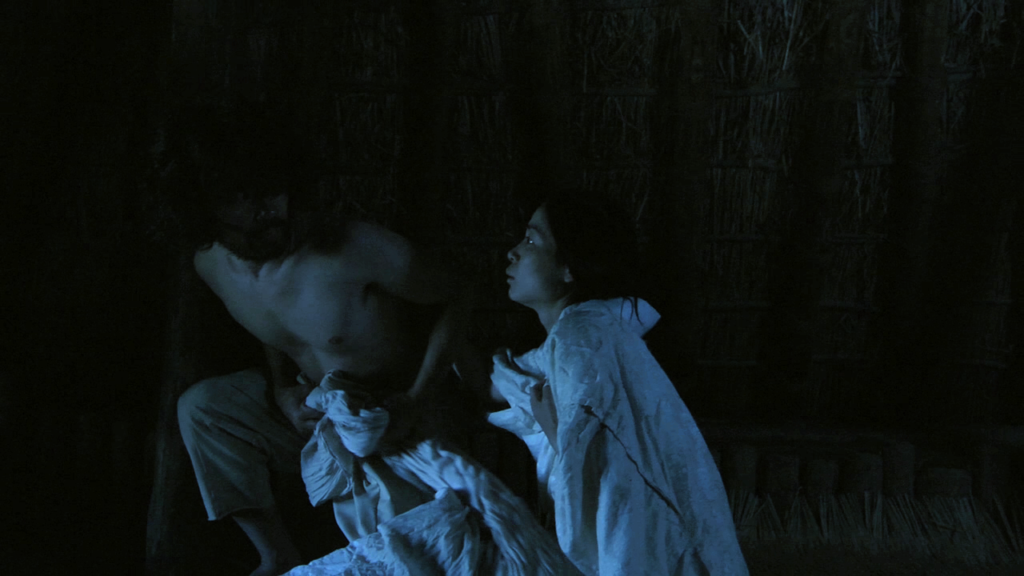
<交錯する時代、 変容する物語への扉>
祭りで歌われる唄が今は途絶えてしまった鍛冶屋の文 化と繋がり、鍛冶屋の文化が製鉄を伝えた渡来人 ( ヤマタ ノオロチ ) にまで繋がっていく。村西氏との出会いを機 に、坂野は「それまで見ていた町の風景が一変して見えた」 と言う。変化しながら繋がり、忘れられ、また誰かの手 によって掘り下げられるもの。
これこそが坂野が興味を 抱いていた“ 感覚の根源 ”であった。鶴来のみならず、仮 に小さな田舎町だったとしても、同じように掘り下げれ ばすぐに何百年、何千年、何万年前までも繋がっていく。 紡ぎ出そうとさえすれば、いくらでも私たちの手で物語 を紡ぐことができるのだ。
『可視化する呼吸』ーそれはつまり、坂野が村西氏 との出会いによってそれまでとは異なる風景を見たよう に、何気ない息づかいに潜む多層的な物語を抽出するひとつのフィルターといえるかもしれない。
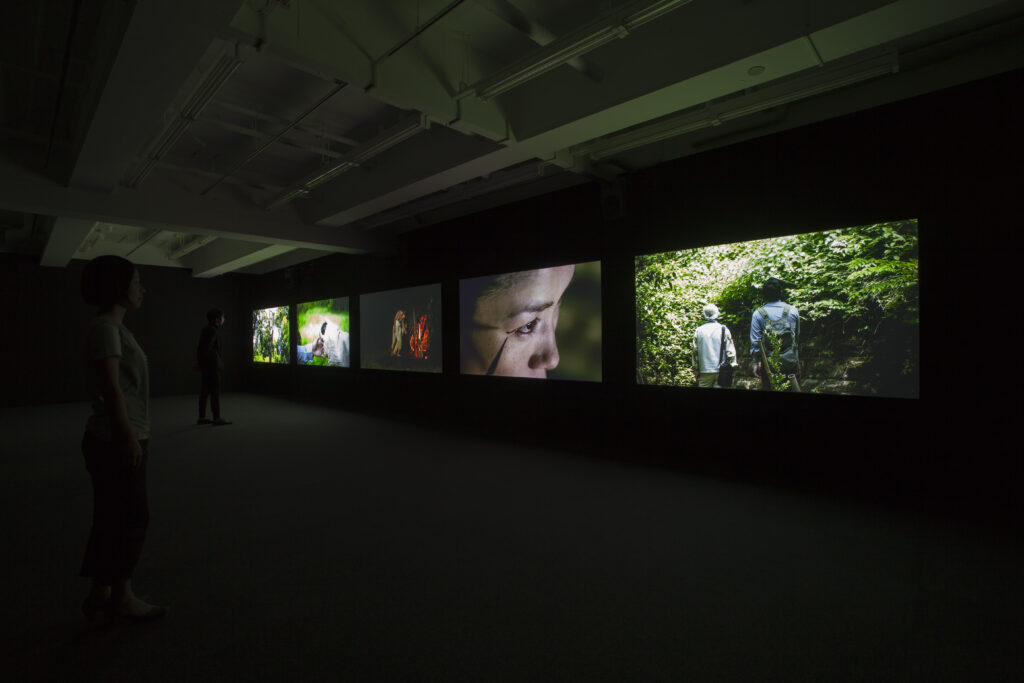
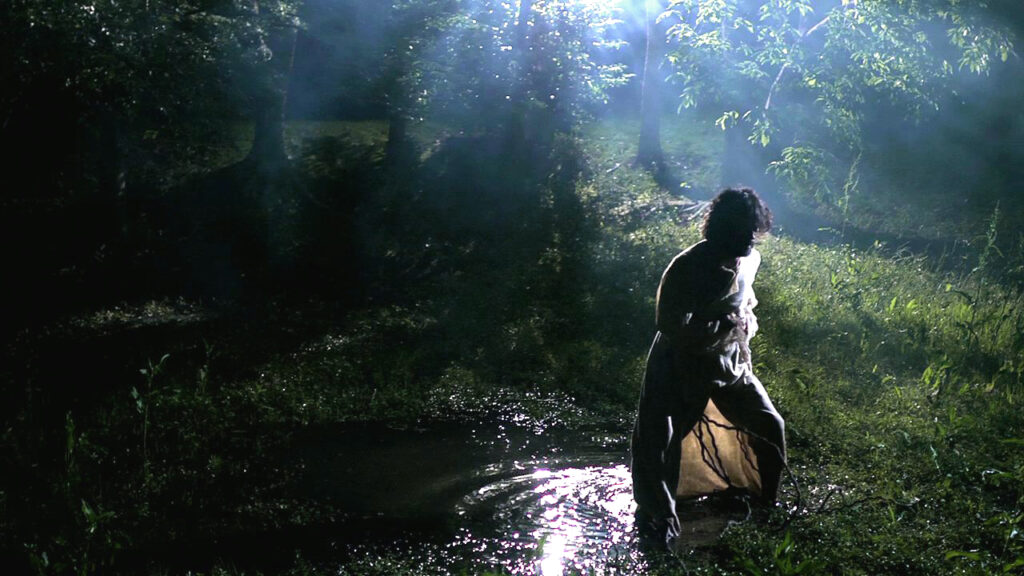
Having produced various projects upon the theme of the handing down of tradition since 2008, he has led back to his birthplace of Tsurugi, Hakusan city in Ishikawa Prefecture. Renovating a local rice store house into a studio and gathering a project team from Tsurugi and beyond, the result of 4 years’ work has culminated here in this project. The local festivals, customs, and culture which pervade everyday life;these elements which have come to saturate our very bodies, and have been naturally accepted – where have they come from? Starting from this question and reaching back into the past, it was during his search for memories of the shaping of the land’s culture that he encountered the researcher of folklore Hakuji Muranishi*, bringing a significant impact upon Sakano’s creative practice. The stories of this local folklore “researcher” reach beyond Tsurugi to encompass the myths of the whole of Japan, tales of the roots of settlers from overseas, a grand “fiction” taking on a history of several thousand years. This work, based upon the tales of Muranishi, folklore legends and personal fieldwork, develops a series of stories following through five different ages from the ancient past to the present. Migrant settlers, the spread of the culture of iron production, the changes of a mystic nature; here these stories presented upon 5 screens continue to evolve as they correspond with and at times hail to “present / future”. Tsurugi, born of such rich nature, is a trading town which has prospered between the sea and mountains, and which is held sacred in local belief. Customs and culture are inherited, transform and reach beyond time. This ‘breath’ can be sensed here, and in tracing the trajectory of these workings, the land, people, and time itself builds layer upon layer. And in that breath, woven from a multilayered world, what is it that we imagine, and what form of story shall we continue to tell? * Hakuji Muranishi Folklore researcher and resident of Tsurugi, Hakusan, Ishikawa Prefecture. Muranishi is engaged in the research of the Noto peninsula, rich in its colourful continental culture, the local Hakusan beliefs which defined an age, and local ancient history. His pursuits introduce local history, culture, nature, traditions, folklore and industry, engaging in an activity which sets out to activate the area both spiritually and economically.
Where Do the Sensations Embedded in the Body Come From?
Who am I, and where did I come from?
It’s a question every person asks at least once in their life. Yet most people move on, layering the present over such thoughts and rarely pursuing them further.
Mitsunori Sakano was born and raised in Tsurugi, Hakusan City, Ishikawa Prefecture. Every October, the town holds the Hōrai Festival, designated as an Intangible Folk Cultural Property of Hakusan. From a young age, Sakano naturally took part in it every year.
In 2008, while working on a project in Ōdate City, Akita Prefecture, Sakano encountered the Shishi-odori—a lion dance with over 400 years of history that was on the verge of disappearing.
There he heard many conflicting voices: “We must not let it die out.” “Its disappearance is inevitable.” “Tradition isn’t about remaining unchanged—it’s about continuing through change.”
These words sparked Sakano’s interest in the origins and transmission of the culture, customs, and embodied memories ingrained in his own hometown. At the same time, he became acutely aware of how little he actually knew about them.
Meeting a Folklore “Researcher” Who Uncovers Faint Traces and Weaves Forgotten Stories
As Sakano began his research in Tsurugi, he visited a local shrine to ask about the origins of the Hōrai Festival. There, he met a folklorist—Hiroji Muranishi—who also appears in Visualising Breath.
From Muranishi, Sakano learned that Tsurugi had once been a blacksmiths’ town, and that its blacksmithing culture dated back to ancient times. Moreover, behind the festival songs Sakano himself had sung since childhood were hidden meanings he had never imagined.
One verse from a traditional blacksmiths’ song appears in Visualising Breath:
“Hey girl over there, shall we do what blacksmiths do?
Lay down the mat by the river, shall we come together?”
This song, still sung during the Hōrai Festival, is familiar to every resident of Tsurugi, often enjoyed playfully by children for its seemingly risqué lyrics.
Yet, according to Muranishi, these words in fact conceal technical terms from ancient iron-smelting practices—phrases like “stoke the furnace” or “add the iron”.
Over a hundred such blacksmiths’ songs survive in Tsurugi, though few understand the hidden language within them. And it is not only Tsurugi—similar songs remain in many towns once flourishing with blacksmith culture.
Seeing Sakano’s amazement, Muranishi told him:
“Important things are always hidden. Even the things said to be ‘incomprehensible’ often carry meaning. And that’s what makes them interesting. What we don’t understand today can be reinterpreted and carried forward by those who come after us.”
Intersecting Eras – The Doorway to Evolving Stories
The songs sung at the festival are connected to the now-lost blacksmith culture, which in turn links back to the toraijin—ancient immigrants said to have brought ironworking to Japan, often represented by the myth of Yamata-no-Orochi.
Through his meeting with Muranishi, Sakano found that “the familiar landscape of my town suddenly appeared transformed.”
Tradition, he realised, is not static—it changes, is forgotten, rediscovered, and reinterpreted through new hands.
This was precisely the essence of what Sakano had long been drawn to—the origin of embodied sensations.
Even a small rural town, when explored deeply, connects in layers—hundreds, thousands, even tens of thousands of years into the past.
As long as we choose to trace and weave those threads, we can continue to create new stories with our own hands.
Visualising Breath can therefore be seen as a kind of filter—one that draws out the multi-layered stories hidden within the quiet rhythms of our daily breath, just as Sakano’s encounter with Muranishi revealed a different landscape within the familiar.

